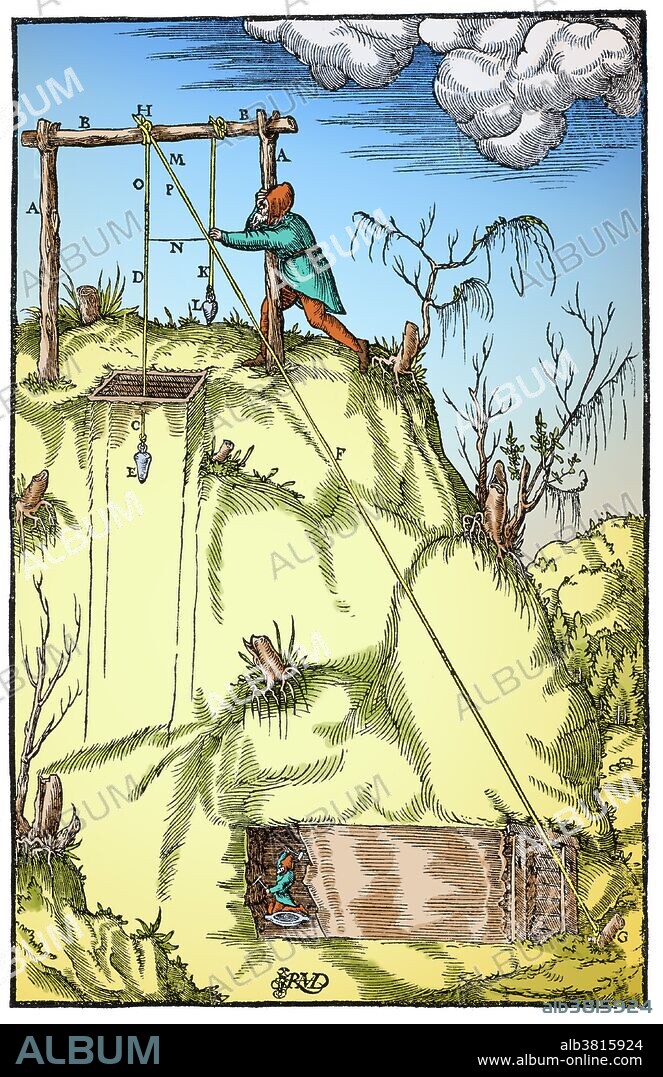alb3815924
De Re Metallica, Triangulation

|
Añadir a otro lightbox |
|
Añadir a otro lightbox |



¿Ya tienes cuenta? Iniciar sesión
¿No tienes cuenta? Regístrate
Compra esta imagen
Título:
De Re Metallica, Triangulation
Descripción:
Ver traducción automática
Woodcut from Agricola's, De Re Metallica. Triangulation applied to a tunnel being driven to meet a shaft. HDE is a cord suspended over the shaft, HFG is a second cord connecting to the mouth of the tunnel, and KL is a third cord to help establish the triangle. This provides a ratio for determining the tunnel's length. Georgius Agricola (March 24, 1494 - November 21, 1555) was a German scholar known as "the father of mineralogy". His book De Re Metallica, published in 1556, was a treatise on mining and extractive metallurgy, illustrated with woodcuts illustrating processes to extract ores from the ground and metal from the ore, and the many uses of water mills in mining. Agricola described and illustrated how ore veins occur in and on the ground, making the work an early contribution to the developing science of geology. He described prospecting for ore veins and surveying in great detail, as well as washing the ores to collect the heavier valuable minerals, such as gold and tin. It was also an important chemistry text for the period and is significant in the history of chemistry. De re metallica is considered a classic document of Renaissance metallurgy, unsurpassed for two centuries. This image has been color enhanced.
Crédito:
Album / Science Source / New York Public Library
Autorizaciones:
Modelo: No - Propiedad: No
¿Preguntas relacionadas con los derechos?
¿Preguntas relacionadas con los derechos?
Tamaño imagen:
3010 x 4650 px | 40.0 MB
Tamaño impresión:
25.5 x 39.4 cm | 10.0 x 15.5 in (300 dpi)
Palabras clave:
ALEMAN • ARTE • BAUER • CIENCIA • COLOR • COLOREADA • DIBUJO • EUROPEO • FAMOSO • GEOLOGIA • GRABADO EN MADERA • HISTORIA • HISTORICO • ILUSTRACION • IMPORTANTE • MATEMATICAS • MATEMÁTICO • MEJORA • MINA • MINERIA • OBRA DE ARTE • PLANCHA DE MADERA • RENACIMIENTO • SIGLO XVI • TUNEL • XILOGRAFIA
 Pinterest
Pinterest Twitter
Twitter Facebook
Facebook Copiar enlace
Copiar enlace Email
Email
